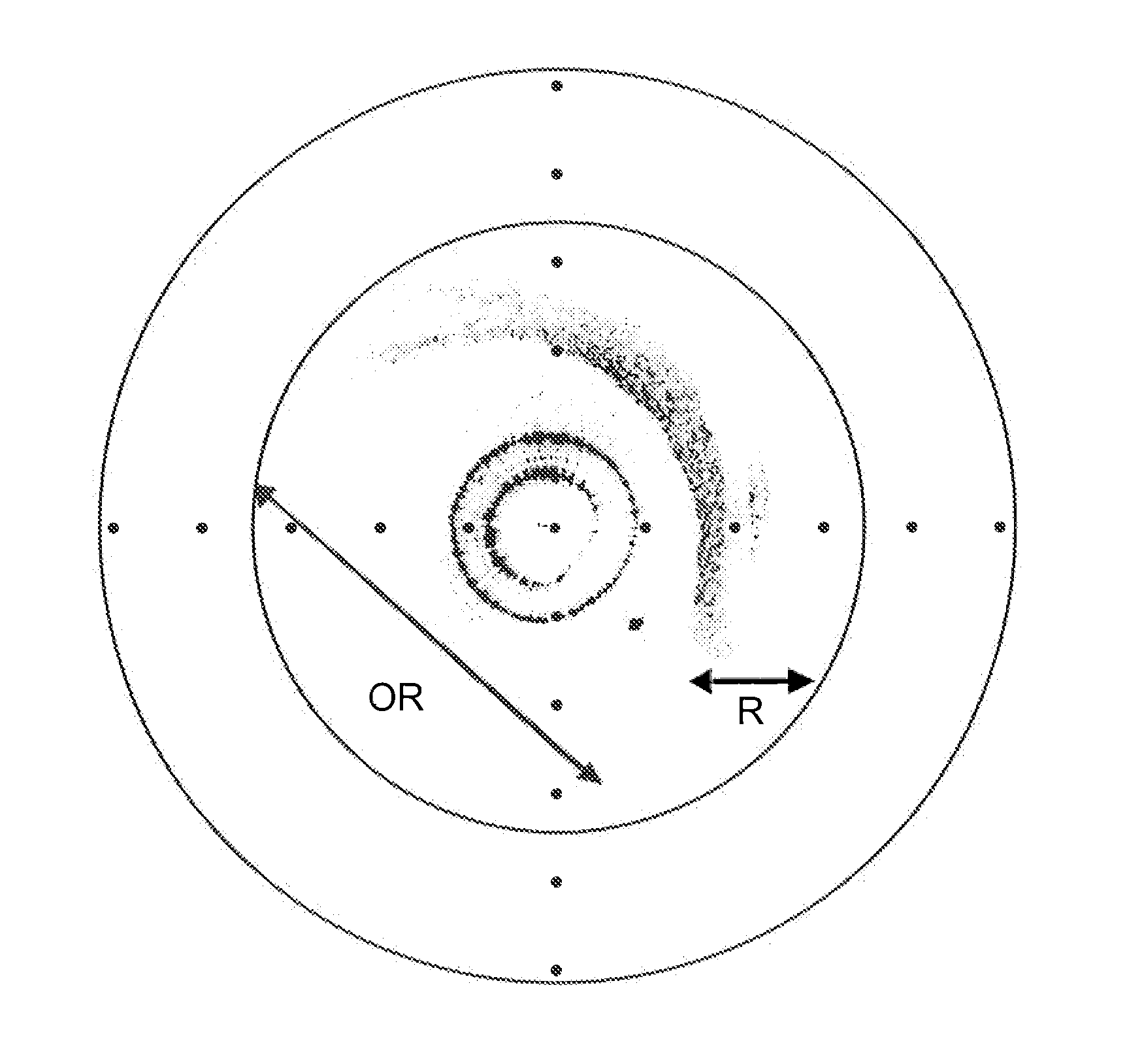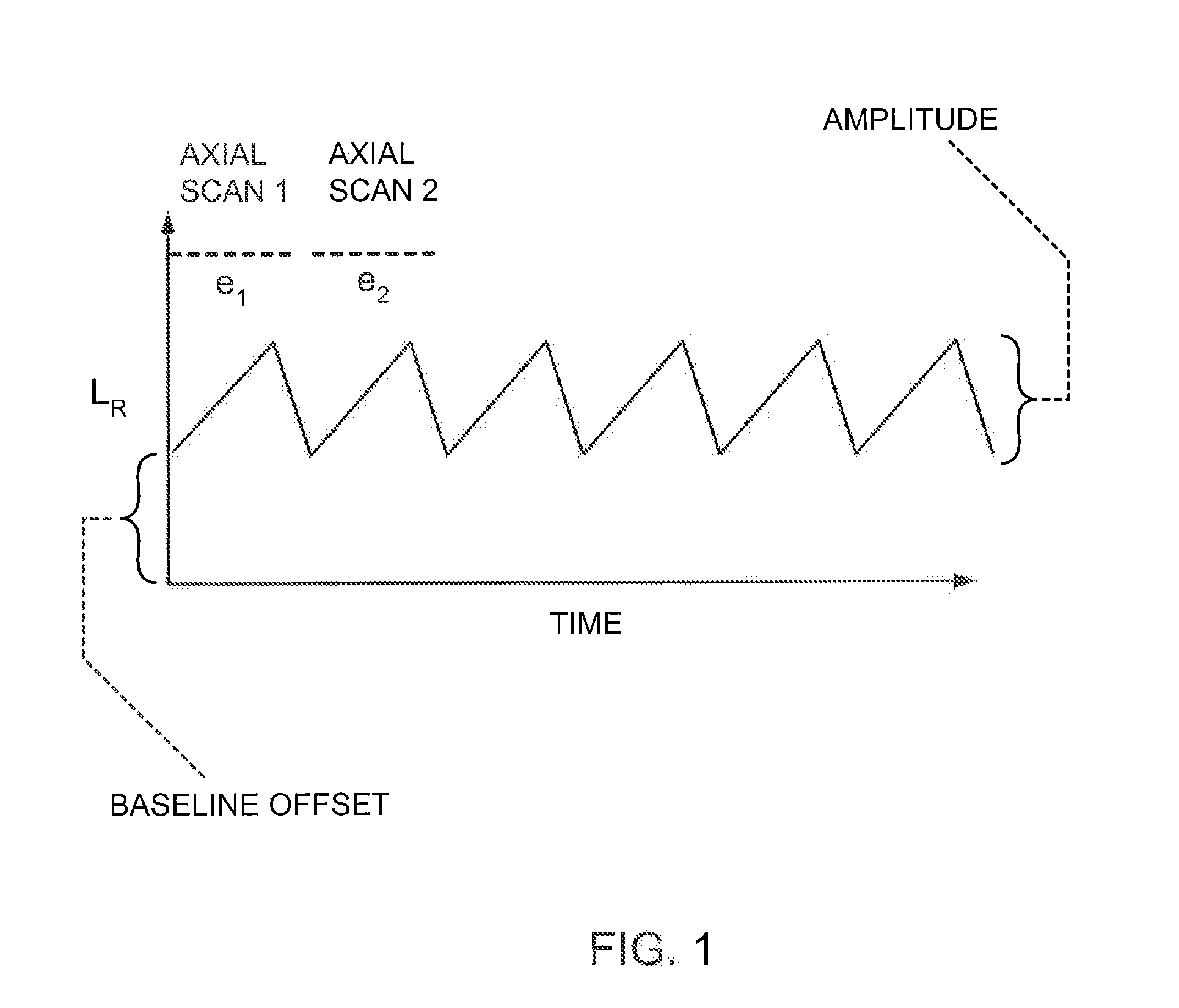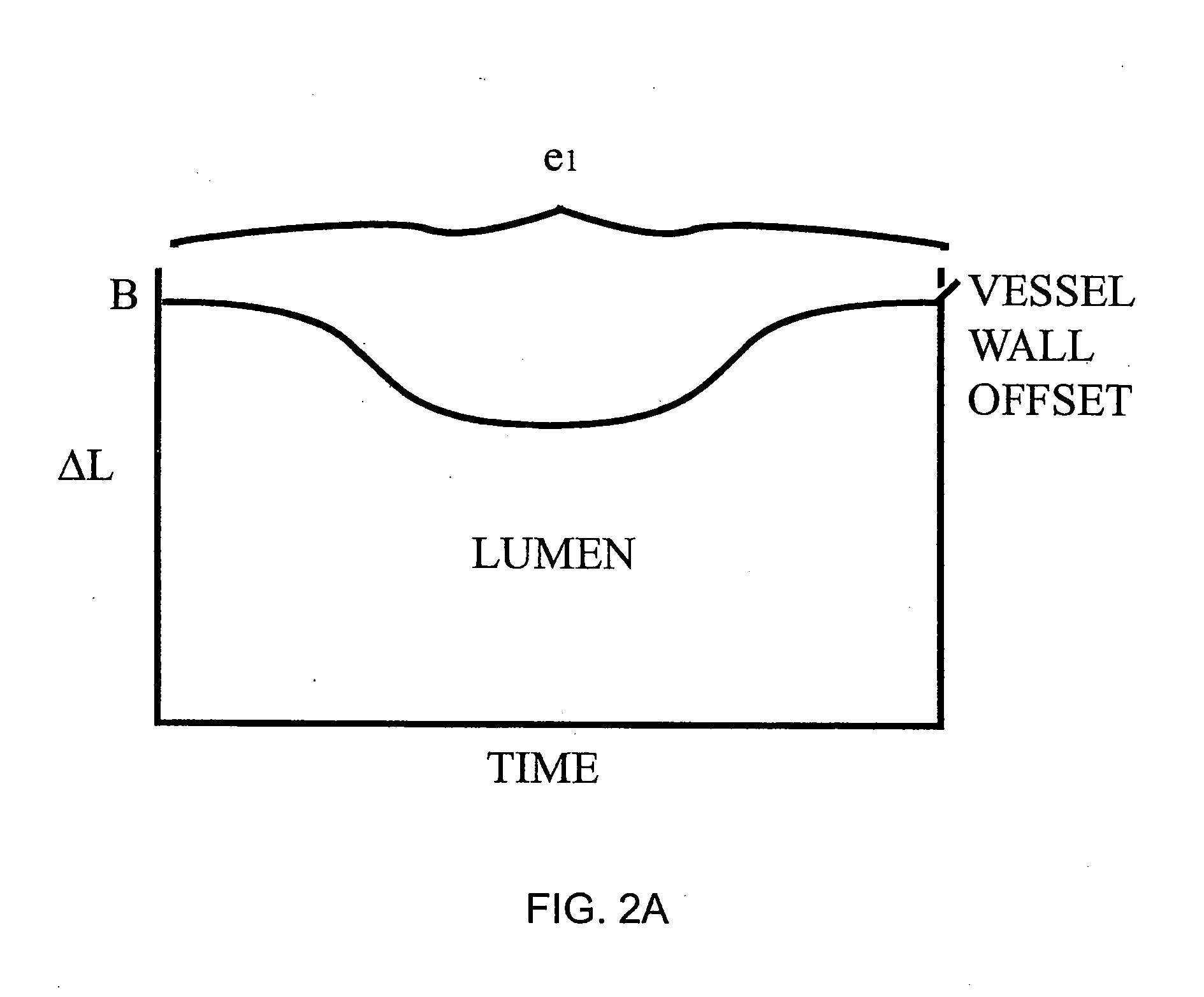Method and Apparatus for Improving Image Clarity and Sensitivity in Optical Tomography Using Dynamic Feedback to Control Focal Properties and Coherence Gating
a dynamic feedback and focal property technology, applied in the field of optical imaging, can solve the problems of signal to noise ratio, sensitivity decrease, and variability of the distance between the probe tip and the surface, and achieve the effect of moving much faster and more accurately, accurately determining the distance variation between the probe and the tissue surfa
- Summary
- Abstract
- Description
- Claims
- Application Information
AI Technical Summary
Benefits of technology
Problems solved by technology
Method used
Image
Examples
Embodiment Construction
Offset and Scan Depth Control
[0044]FIG. 1 is a graph of a seradyne waveform of a conventional DC baseline offset, where LR is the reference arm optical delay distance offset and t is time (e.g., 0-20 kHz). One scan image length is shown as “e1” and a second is shown as “e2”. The peak-to-peak amplitude is called the AC component.
[0045]FIG. 2A shows a graph of the vessel wall offset contour of one contour scan waveform where the x-axis is time and the y-axis is ΔL. FIG. 2B shows the normal (constant offset) scanning wave of ΔLR which is a seradyne wave and is shown in where each period is a single scan image (shown as bracketed Axial Scan 1 having a scan image length of e1 and Axial Scan 2 having a scan image length of e2). In a given contour there can be somewhere in the range of 250-500 seradyne scans. FIG. 2A shows the offset correction for a period of a single scan. Optical delay (ΔL) is calculated as
ΔL=ΔLS−ΔLR
where ΔLS is the distance of the sample arm to the tissue surface and ...
PUM
| Property | Measurement | Unit |
|---|---|---|
| structure | aaaaa | aaaaa |
| transverse dimension | aaaaa | aaaaa |
| focal distance | aaaaa | aaaaa |
Abstract
Description
Claims
Application Information
 Login to View More
Login to View More - R&D
- Intellectual Property
- Life Sciences
- Materials
- Tech Scout
- Unparalleled Data Quality
- Higher Quality Content
- 60% Fewer Hallucinations
Browse by: Latest US Patents, China's latest patents, Technical Efficacy Thesaurus, Application Domain, Technology Topic, Popular Technical Reports.
© 2025 PatSnap. All rights reserved.Legal|Privacy policy|Modern Slavery Act Transparency Statement|Sitemap|About US| Contact US: help@patsnap.com



